State Guest House, Gardens And Art - Discover A New Side Of Shinjuku

For over seven decades, Shinjuku has been the political and cultural heart of Tokyo. The majestic State Guest House and Shinjuku Gyoen National Garden are just two of the wonderful places that show the true charm and richness of this area.
Shinjuku, with its bustling streets and dazzling neon light cityscapes, is probably best known as an business and shopping district. However, with the Tokyo Metropolitan Government Building, Shinjuku Gyoen National Garden and the State Guest House Akasaka Palace being located in this area, Shinjuku has always played an important role as the political and cultural center of Tokyo.
A very eclectic part of the city, Shinjuku deserves at least a day of your time. The route introduced in this article allows you to experience the many faces of the Shinjuku area, from the splendid State Guest House and the beautiful Shinjuku Gyoen Imperial Gardens to the lively and youthful The Artcomplex Center of Tokyo and the fascinating Shinjuku by night.
9:30 -- Going from Shinjuku to Yotsuya Station
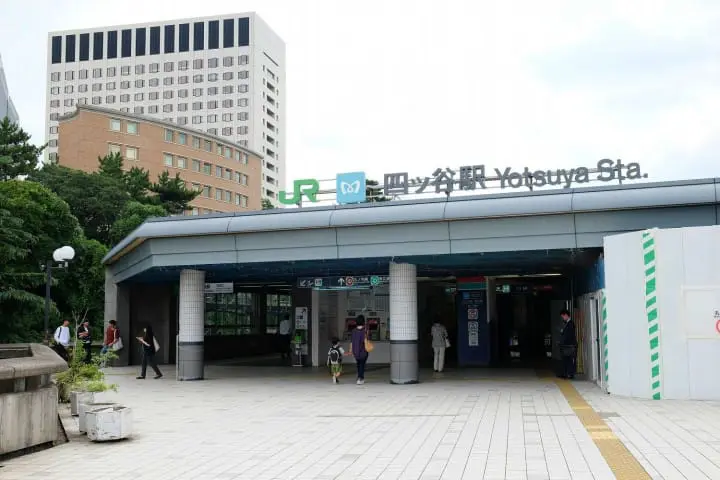
Our route starts in Yotsuya, the area neighboring Shinjuku to the east. To get to Yotsuya from Shinjuku, take the Tokyo Metro Marunouchi Line from Shinjuku Station. You will reach Yotsuya Station in 7 minutes.
The State Guest House can be reached in less than 10 minutes by foot from here. As soon as you exit the station and start walking along the avenue to your left, you will notice the large white gates and fence surrounding the palace.
10:00 - 11:30 -- Visiting the State Guest House Akasaka Palace
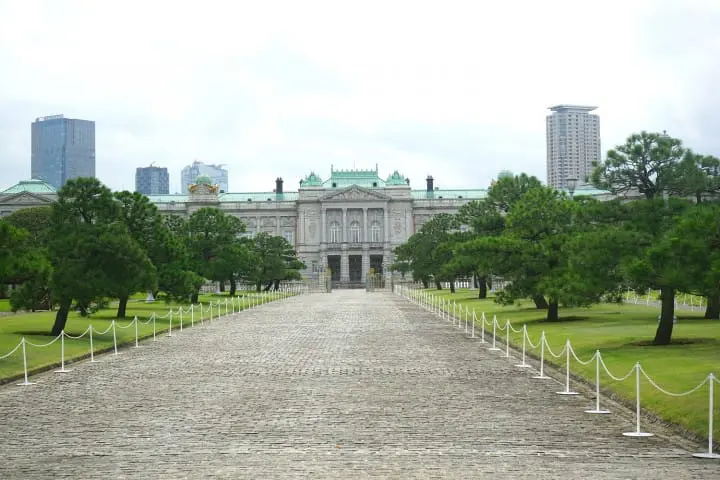
Initially built as a palace for the Crown Prince who was to become Emperor Taisho (1912 - 1926), the Akasaka Palace now serves as a state facility for diplomatic meetings, ceremonies, and receptions. It is here at the State Guest House where political leaders from all around the world are being welcomed by the Japanese state officials.
British Prime Minister Theresa May, the former president of the United States of America, Barack Obama, or the King of Spain Felipe VI are among the recent guests of the Akasaka Palace. With the exception of the days when it serves its official purpose, the State Guest House is open to the public and can be visited.
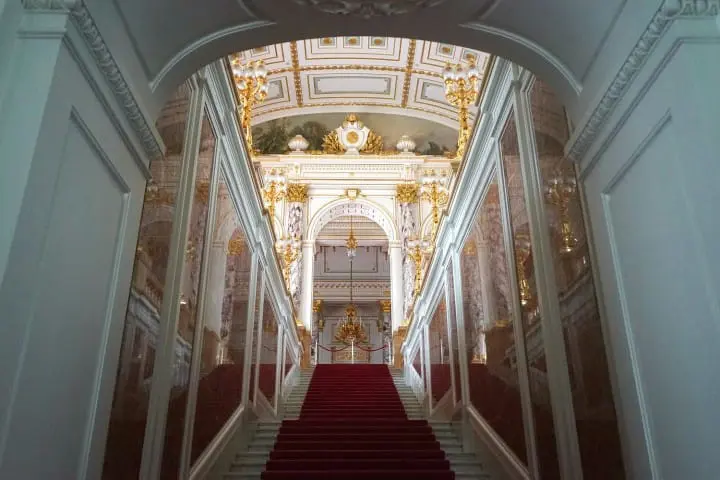
Right from the entrance, the visitors will notice the impressive architecture of this building, which combines European styles with distinctive Japanese elements. The building of this structure began in 1899, under the supervision of Toukuma Katayama (1854 - 1917), one of the first Japanese architects to have studied in Europe.
The structure has the vastness and sturdiness specific to Neo Baroque-style palaces, but a distinctive Japanese sensibility exudes from every detail of the interior decor. The Japanese themes and motives are brilliantly combined with the architectural style, resulting in a majestic atmosphere.
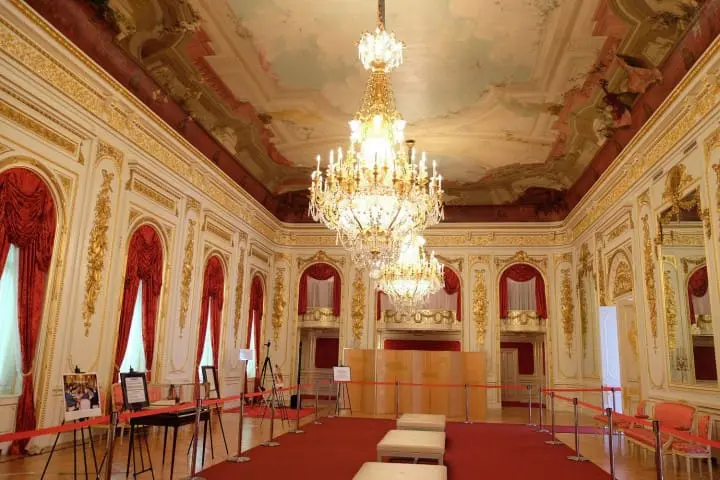
Take for instance, the Hagoromo no Ma, one of the gorgeous rooms in the State Guest House. Originally designed as a ballroom, it is now used as a space for welcoming ceremonies and receptions of foreign diplomats.
The theme of this room was inspired by the Japanese legend about the celestial maiden who, enchanted by the beauty of the world, came down from the sky to visit the Earth. “Hagoromo” refers to her feathered robe, an important motif in the legend. The large painting on the ceiling illustrates the serenity of the scene about the celestial maiden recovering her feathered robe.
The room is lit by three exquisite chandeliers, the largest in the State Guest House, each weighing almost 1 ton and consisting of around 7000 parts. In addition to the wonderful painting on the ceiling that looks like a window toward the sky, the decorative reliefs on the walls show musical instruments, among whom you can recognize the Japanese lute and drum. The entire room is conceived as a harmony of Western and Japanese elements, embodying the ideals of Meiji period (1868 - 1912) Japan.
* Please note that photography is not allowed inside the State Guest House. The pictures used in this article were taken with special permission.
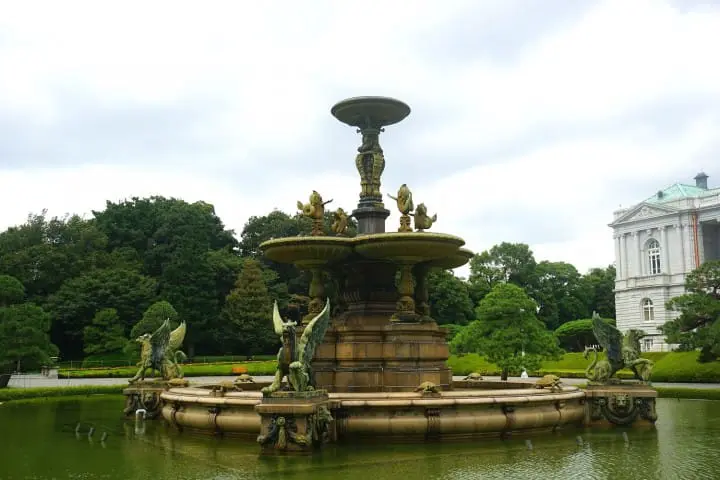
Multi-lingual audio guides are available for visitors and we recommend using them in order to learn about all the highlights of this impressive building. After your visit, do take the time to see the garden surrounding the palace.
In addition to many types of beautiful pines, which are considered auspicious trees in the Japanese tradition and are maintained with utmost care, the garden has many other highlights. For instance, the majestic fountain located in the center is one of a kind and has been declared a National Treasure.
There is also a Japanese Style Annex that includes a room for tea ceremony and other traditional Japanese rooms. To visit this building, prior reservation is required. For details please check the website of the State Guest House.
Please do enjoy your visit to the State Guest House, a facility that embodies the ideals of modern Japan, gathering the most refined elements of European-style and Japanese architecture and culture.
12:00 - 12:50 -- Lunch at Shinjuku Kappo Nakajima
After your visit to the State Guest House, come back to Shinjuku to enjoy lunch at one of the most popular dining places in the area, Shinjuku Kappo Nakajima. From Yotsuya Station, take the Tokyo Metro Marunouchi Line to Shinjuku Sanchome Station. Nakajima is a 3 minute walk away from exit A1 of this station.
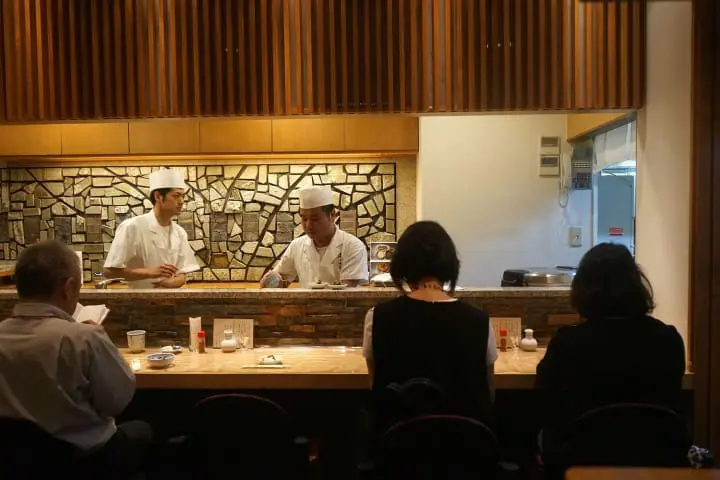
Nakajima is a well-established restaurant opened in 1963, specializing in sardine dishes. The delicious food served here, available at reasonable prices, has won acclaim both in Japan and abroad. In fact, Nakajima was awarded one Michelin star for its services, and is so popular that the line starts to form in front of the store from around 11:00.
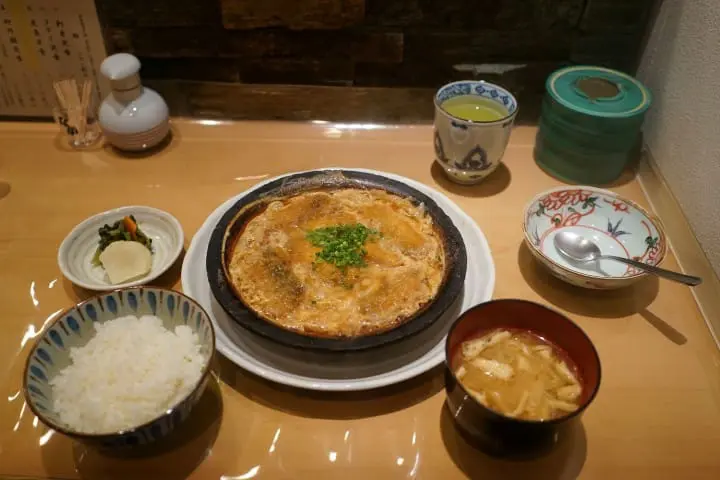
At dinnertime, they serve kaiseki cuisine (*1), exquisite Japanese dishes made with seasonal ingredients and utmost care. For lunch, you can have the delicious sardine specialties that are the pride of Nakajima.
*1… Kaiseki cuisine refers to traditional Japanese course menus, containing various dishes made with seasonal ingredients, which are brought one by one.
We tasted the Yanagawa Nabe Set (900 yen), which consists of a hot dish of sardines cooked with eggs and vegetables, a bowl of hot rice, miso soup and pickles. It is a very tasty, filling dish that is representative of the cuisine served at Nakajima.
The Japanese atmosphere of the restaurant, with wooden interior and sliding doors, together with the dishes that reflect the features of each season, add up to the experience of enjoying your meal in a place that has witnessed the rise of Shinjuku to the status of Tokyo’s vibrant cultural center.
13:00 - 14:30 -- Shinjuku Gyoen National Garden
After lunch, how about enjoying a walk in Shinjuku Gyoen National Garden?
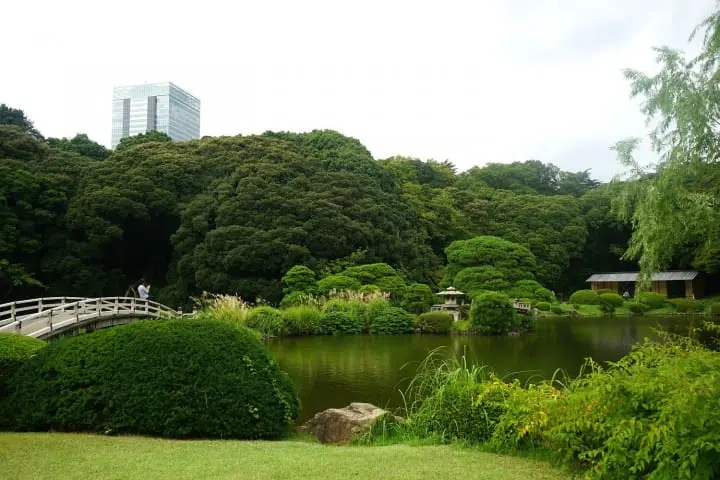
Creating a stark contrast with the skyscrapers of the business district, Shinjuku Gyoen is a vast public garden spreading on almost 60 hectares of land in the eastern part of Shinjuku. Back in the Edo period (1603 - 1868), this area used to be the residence and garden of a wealthy lord. In late Meiji times (1868-1912), it became an imperial garden and only after WWII it was opened to the public.
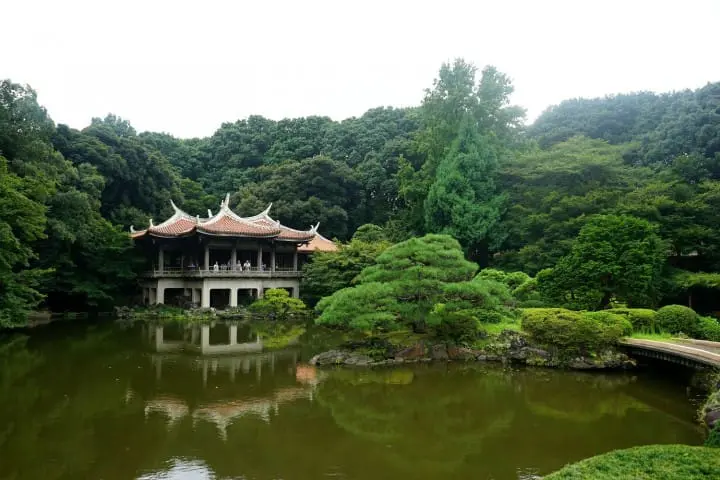
Each season brings new highlights to this beautiful gardens, with ever-changing flowers and plants. Visitors can enjoy three types of gardens – the traditional Japanese garden with ponds, bridges and the charming Taiwanese Pavilion, the French garden with its rose beds, and the English landscape garden where you can relax on the lawn.
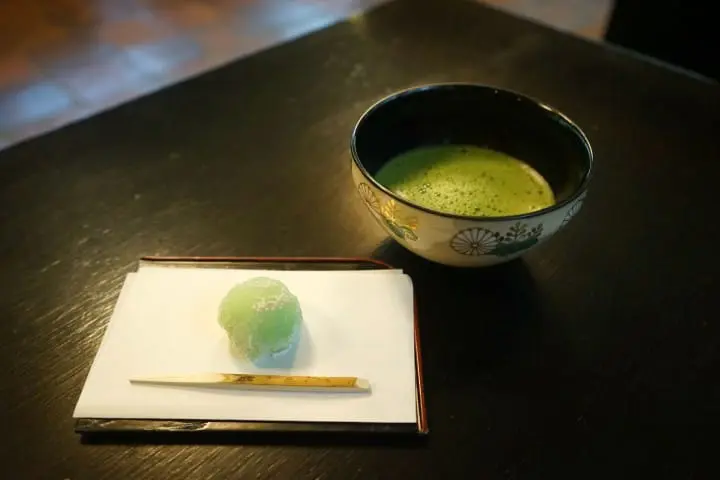
A unique experience we recommend you try is having tea in the Japanese tea ceremony room Rakuutei. For 700 yen, you buy a tea ticket from the vending machine found at the entrance. Upon entering the room, hand over the ticket to the staff and take a seat.
Until the tea is brought to you, you will have the time to relax and take in the dignified atmosphere of the tea room. Please take a look at the flowers, the painting and the tea utensils on display. They are carefully selected every day to fit the mood of the season.
Enjoy the traditional sweet and the freshly prepared green tea in silence. You will instantly feel recharged and ready to go back to the lively streets of Shinjuku.
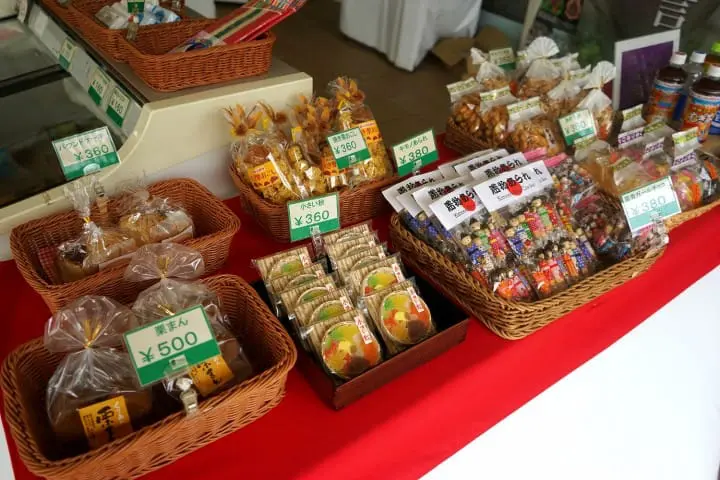
There are several resting places in Shinjuku Gyoen, with benches where you can sit down if you get tired after strolling around or just wish to take the time and admire the garden landscape. In addition to refreshments, small souvenirs are also available at these stands. The seasonal sweets reflecting the seasons are a specialty of Shinjuku Gyoen, and could make a nice gift to your dear ones.
Please be aware that bringing in and drinking alcohol, as well as the use of toys and sports equipment are prohibited in the garden.
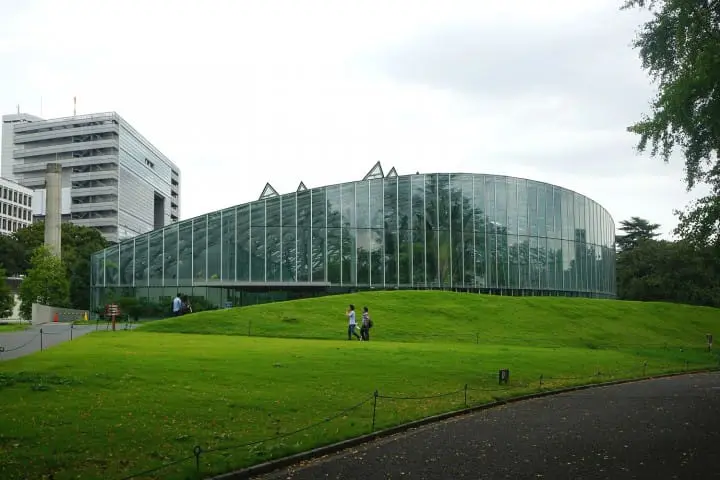
After a tour of the gardens, which show a different landscape each season, do stop by the greenhouse also. The variety of rare plants and exotic flowers always in bloom is amazing!
A stroll through Shinjuku Gyoen National Garden is a joy to the eyes in any season and you will surely notice that the beauty of this garden is enhanced by the contrast with the rising buildings in the background. The fascinating coexistence of nature and the cityscape is probably what defines Shinjuku.
Hotels near Shinjuku Gyoen
15:00 - 16:30 -- The Artcomplex Center of Tokyo
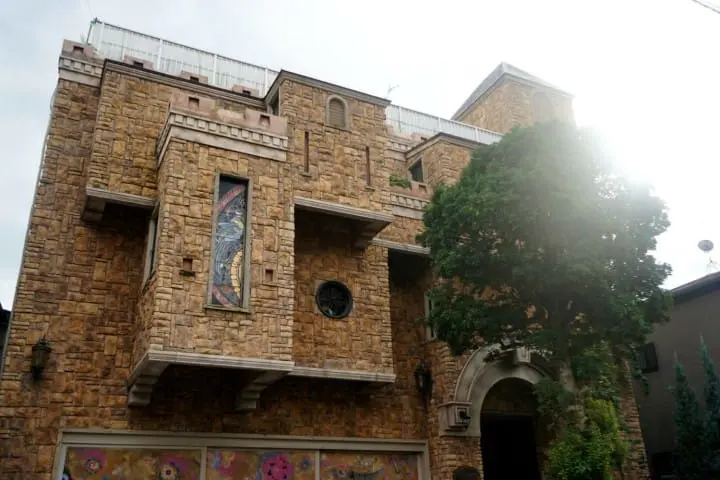
After the nature walk in Shinjuku Gyoen, we suggest experiencing Shinjuku's vibrant art scene. From the Okido Gate of Shinjuku Gyoen, it takes only around 10 minutes on foot to reach The Artcomplex Center of Tokyo, a facility exhibiting the works of young contemporary artists.
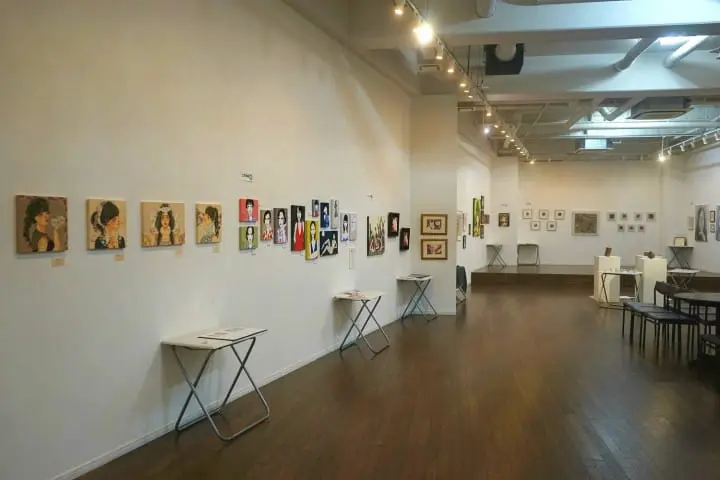
The galleries within The Artcomplex Center spread on two separate floors and the exhibitions change almost every week. The works on display are the creation of Japanese and international artists and you will be able to see a great variety of styles and genres.
Since the sixties, when the city began developing at an accelerated pace, Shinjuku has always been the birthplace of new art trends. Many of the artists whose works are displayed at The Artcomplex Center of Tokyo are the future leading figures of the contemporary art world in Japan. If you find a work that you particularly like, feel free to acquire it. It will be a precious keepsake from your visit to Shinjuku.
After 17:30 -- Strolling around Shinjuku and Enjoying a Drink in Shinjuku Golden-Gai
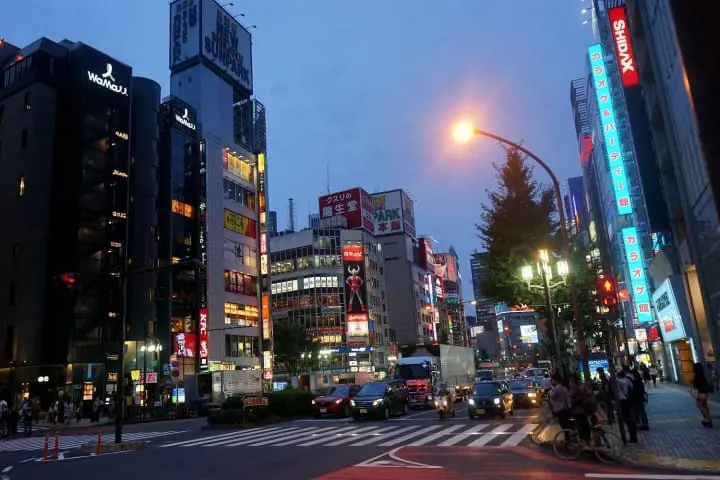
Around dusk, it is fun to just stroll around the city gazing at the colorful landscape created by the neon lights. If you're in the mood for shopping, check out the department stores in the area.
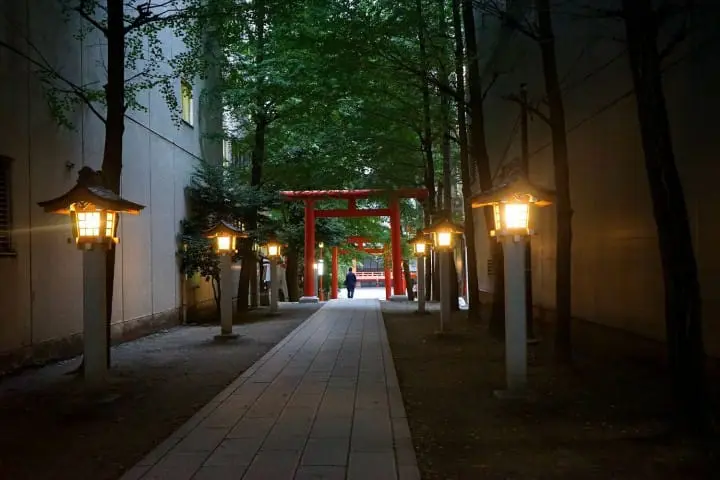
If there is a place that we particularly recommend visiting at dusk, that would be the area around the Hanazono Shrine, a quiet oasis in the heart of the urban landscape.
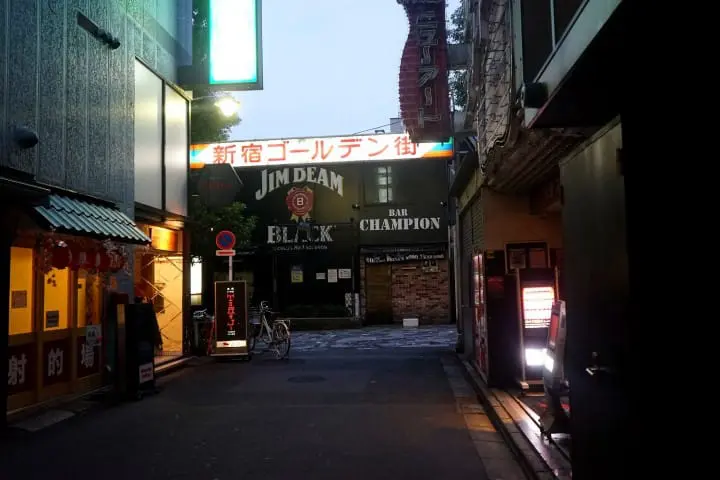
In the evening, how about enjoying a drink in Shinjuku Golden-Gai? This alley lined with pubs and bars retains the atmosphere of Japan in the sixties-seventies and is the favorite retreat of locals, Japanese businessmen, as well as bohemian characters.
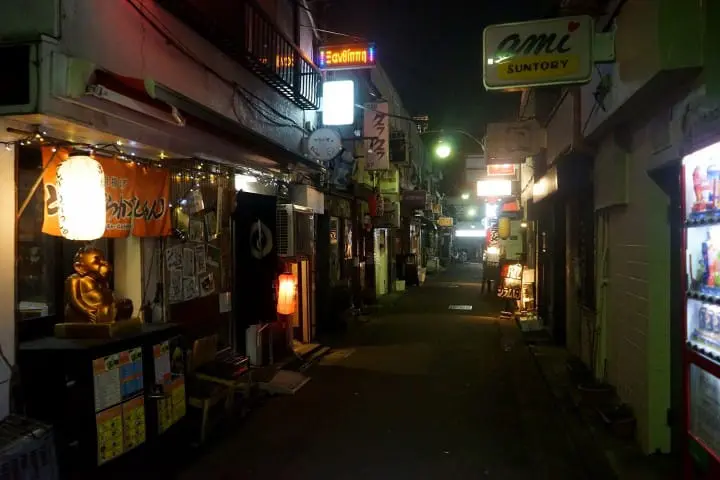
The unique atmosphere of Golden-Gai, with its dimly lit signboards, hidden away from the bustle of the great avenues, is a sight in itself. Some of the pubs have English signboards and welcome international tourists. If you're in luck, you might find a friendly bar owner that will share with you his stories about Shinjuku. It's a great chance to deepen your knowledge of this area that has been always at the core of the new developments in Tokyo.
Enjoy Your Time in Shinjuku!
An area whose highlights are as diverse as can be, from important state facilities and National Treasures to a bustling business district, as well as nature spots and youthful centers of artistic creativity, Shinjuku is a multi-faceted, fascinating destination that surely deserves at least one day of your time. We hope you enjoy your exploration of Shinjuku, the heart of Tokyo!
Shinjuku Route Summary
Shinjuku Station → Yotsuya Station → State Guest House → Lunch at Shinjuku Kappo Nakajima → Shinjuku Gyoen National Garden → The Art Complex Center → Shinjuku Golden-Gai
Transportation expenses: less than 500 yen
Entrance fees: State Guest House 1000 yen, Shinjuku Gyoen 200 yen
Lunch, souvenirs and other expenses: around 3000 yen.
Supported by Tokyo Convention&Visitors Bureau.
Web content editor and travel writer at MATCHA.




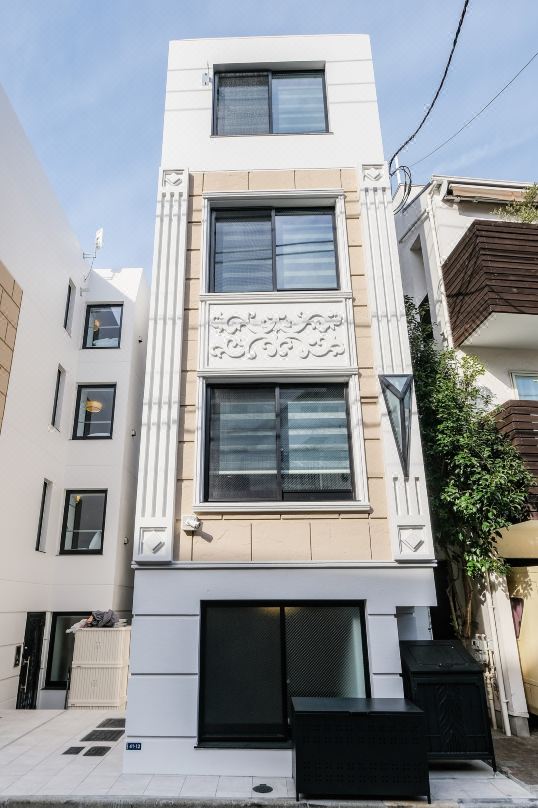

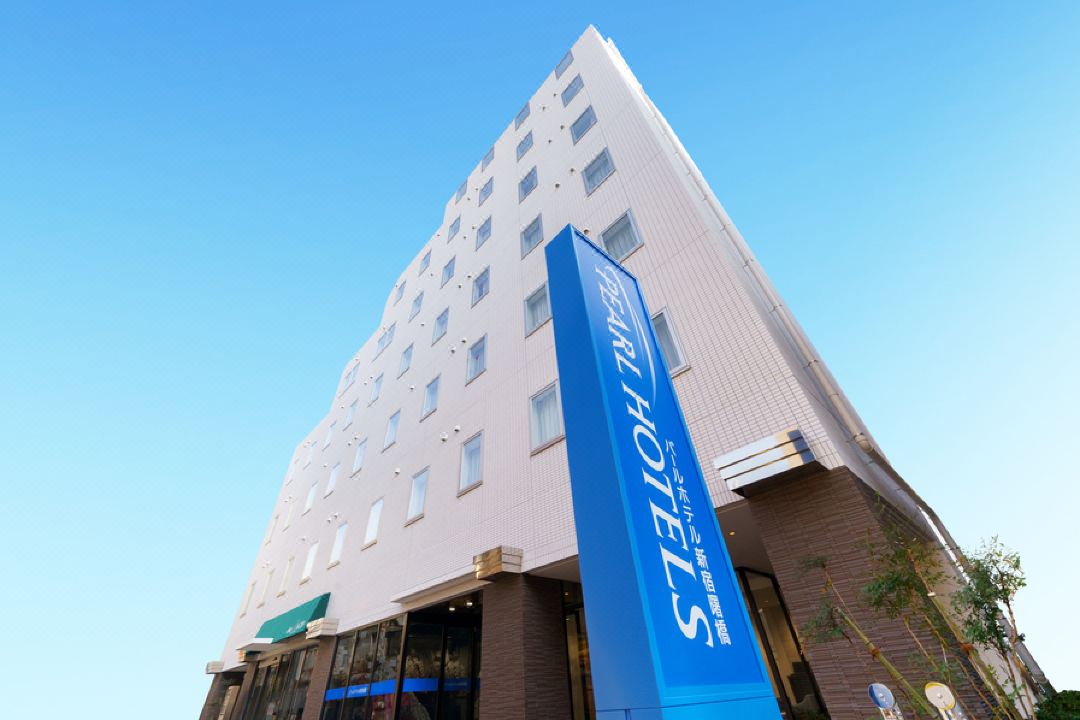





































![[2026] Family Winter Trip to Suzuka Circuit! – For Both Day trips and Overnight Stays!](https://resources.matcha-jp.com/resize/720x2000/2025/12/26-254097.webp)
![[Northern Okinawa] 4 Recommended Cosmos Fields in Okinawa | Sunflowers and Cherry Blossoms in the Same Season!](https://resources.matcha-jp.com/resize/720x2000/2024/08/12-192028.webp)


